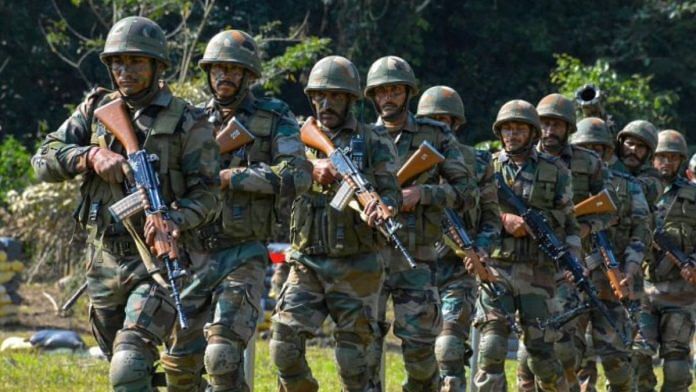Thank you dear subscribers, we are overwhelmed with your response.
Your Turn is a unique section from ThePrint featuring points of view from its subscribers. If you are a subscriber, have a point of view, please send it to us. If not, do subscribe here: https://theprint.in/subscribe/
In the context of the upcoming 76th anniversary of Indian independence, it is important to examine the arguably least-understood aspect of her freedom struggle; the Indian National Army (INA), an organization that has received renewed attention since the installation of Netaji Subhash Chandra Bose’s statue in Delhi. But few know that the first leader of the INA was Captain Mohan Singh, not Netaji; there was an INA before the INA that many know about.
In 1941, a young Japanese intelligence officer, Major Iwaichi Fujiwara and a staff of 14, along with volunteers from a clandestine independence league in Bangkok led by Pritam Singh, followed on the heels of Japanese troops invading Malaya to contact surrendering Indian troops. Their mission was as simple as it was audacious- to get Indian soldiers fighting for Britain to switch sides and form the INA. One of the officers they convinced was Captain Mohan Singh of the 1/14 Punjab regiment.
After the fall of Singapore on 15 February, 1942, thousands of surrendered Indian troops were separated from their British officers and brought to Farrer Park- a former Singapore race course. Upon hearing a call from Captain Singh and Major Fujiwara to join an army to liberate India, many enthusiastically joined the INA. Fujiwara sincerely believed in Indian independence- in an almost Lawrence of Arabia mould- and campaigned with Tokyo for a sovereign post-war India devoid of British, and importantly, Japanese control.
A parallel political arm, the Indian Independence League (IIL) was created at a March 1942 conference in Tokyo attended by Indian representatives from all-over South East Asia. Rash Behari Bose, an Indian revolutionary and long-time resident of Japan was made president (Pritam Singh died in air crash enroute to Tokyo).
The INA and IIL grew quickly. The Japanese replaced the small Fujiwara team with Colonel Hideo Iwakuro and a staff of 500 to manage the burgeoning operation. Iwakuro, the IIL and the INA also established a secret spy school in Penang (the subject of my book The Swaraj Spy). Unlike Fujiwara, Iwakuro was not driven by idealism. Armed with shrewd political instincts, he sensed and implemented Tokyo’s wishes.
About 100 IIL delegates met again at the Silpakorn Theatre in Bangkok in June 1942 to define the rules of engagement between the IIL/ INA and Japan. An IIL Council of Action steering committee of 5 delegates was formed. The Bangkok Resolution was passed by Indian delegates that clearly enunciated Japan’s aims in India, command and control of the INA, ownership of vacated Indian properties and other points. A key point in the resolution was a declaration that Japan did not have colonial designs on India; the IIL foresaw the possibility of Indian soldiers fighting to overthrow colonial rule, only to replace British rulers with Japanese overlords. The resolution was submitted to Tokyo with a request for a point-by-point response. Beyond a general declaration that Japan would help India gain independence, that point-by-point response never arrived until the end of the war- not under the Mohan Singh or later, the Bose-led INA.
The relationship between the Indians and the Japanese frayed quickly. Mohan Singh refused to move INA troops unless the point-by-point response to the Bangkok Resolution was received. Iwakuro deflected requests to expand and equip the INA into a fighting force of consequence. Twenty cadets from the spy school were sent prematurely by the Japanese to India without IIL/ INA consent, leading to their capture by the British. Several attempts to mediate over the differences, including by the idealistic Fujiwara, did not succeed. The Japanese arrested Mohan Singh in December 1942. He remained under house arrest until the end of the war. Members of the IIL Council of Action, other that Rash Behari Bose, resigned. The first attempt at forming a military and political force to defeat Britain with Japanese help, collapsed under the weight of distrust and dysfunction.
It took Subhash Chandra Bose—brought by submarine from exile in Germany in 1943—to resurrect and revive the INA; the rest is relatively well-known history.
As India strives today to balance its equations with great powers, it is instructive to reflect on this history and an African saying, “When elephants fight, the grass gets trampled.”
Vijay Balan is an avid history-buff and author of ‘The Swaraj Spy’ (Harper Collins)
These pieces are being published as they have been received – they have not been edited/fact-checked by ThePrint.

